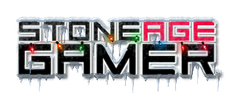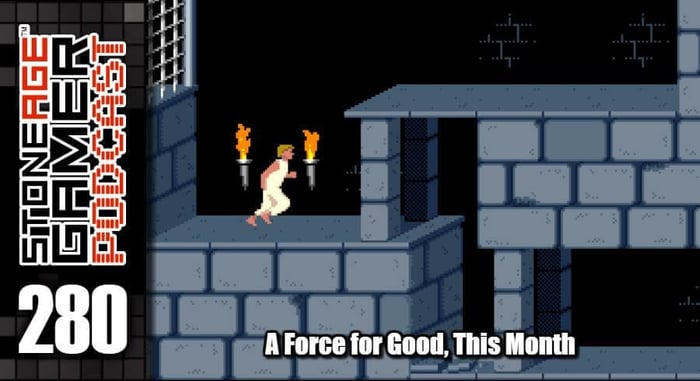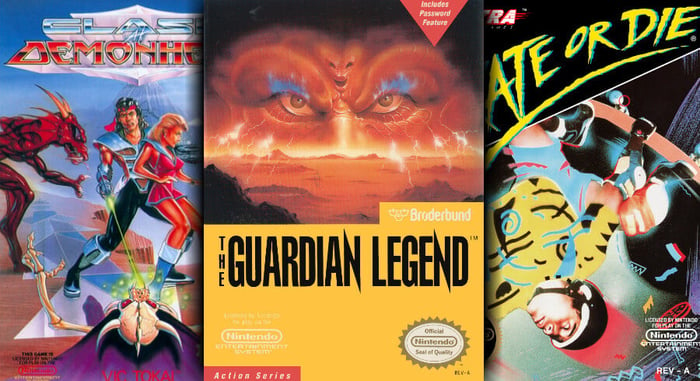
Nintendo Wasn't Ready for the Switch
With great power...
Nintendo has been on a roll since the Switch launched. The console handheld hybrid has been a huge success, and there’s been plenty of killer software to back it up. The Legend of Zelda: Breath of the Wild and Super Mario Odyssey reminded us all of exactly what Nintendo is capable of when they go all-in on an idea. Super Smash Bros. Ultimate continues to impress with its seemingly bottomless well of content, and Splatoon 2 quickly shed its “not much more than a port” status with a ton of content updates and the killer Octo Expansion DLC. Even the recent Luigi’s Mansion 3 I’m told is the best that franchise has ever been.
A different kind of success
But it’s not all sunshine and rainbows. While many of Nintendo’s biggest franchises have gotten the royal treatment, some Switch outings haven’t exactly been home runs. Kirby: Star Allies definitely got better over time, but it’s still not quite as good as the franchise had been on 3DS, especially in terms of overall content. Mario Tennis: Aces was a tremendous step up from the abysmal Mario Tennis: Ultra Smash for Wii U, but the story mode was a far cry from the glory days of the Game Boy Color and Game Boy Advance. Super Mario Party took some huge strides in the right direction after the universally reviled Mario Party 10, but still suffered from a shocking lack of content.
For every Xenoblade Chronicles 2, there’s a Yoshi’s Crafted World. Games that can be best described as “fine,” and in the shadows of stuff like Fire Emblem: Three Houses, it’s hard not to feel a twinge of disappointment when it’s clear that if they wanted to, those games could have been better, but they just weren’t.
It would be absurd to expect every Nintendo game to be on the same level as Super Mario Odyssey, but when the results are that good, why not take the time to make sure every game you release is at least as good as it can be? Super Mario Party could have had more game boards. Mario Tennis: Aces could have had a more in-depth story mode. Super Mario Maker 2 could have had co-op online on release day. So why didn’t they? Honestly, I think Nintendo simply wasn’t ready for this level of success.
Top of the world
Nintendo hasn’t had a console in this position since the 90s. I know, the Game Boy Advance, DS, and 3DS lines were huge successes, and the Wii sold a bajillion units, but there’s more to it that that. The Nintendo Switch isn’t just successful, it’s thriving.
Back in the late 80s, the NES was king of the hill when it came to home console gaming, and really video games in general. People didn’t buy the NES so they could play Super Mario Bros., they bought it to play Super Mario Bros. and a fat stack of other games too. Same thing with Game Boy, which is why the Game Gear and Lynx couldn’t topple it, even with vastly superior tech. The Super NES had a real fight on its hands with the Genesis, but it was ultimately its software that gave it the boost it needed to overtake Sega’s massively successful console. After that though, things changed.
The Nintendo 64 may have been pretty popular when it launched, but even at its best it was nowhere near the success of the Sony PlayStation. Hits like The Legend of Zelda: Ocarina of Time and GoldenEye 007 kept it on the map after the initial amazement over Super Mario 64 wore off, but this was where Nintendo’s 3rd party woes began to manifest.
3rd party problems
If a game wasn’t made by Nintendo themselves, chances are its Nintendo 64 iteration was only going to sell a fraction of what it would sell elsewhere. The system may have been an overall success for Nintendo, but it kicked off a trend that still haunts them to an extent today.
The GameCube failed to maintain much meaningful 3rd party content, and even when they did, the superior experiences were almost always on opposing hardware. The Prince of Persia trilogy was great on GameCube, but it ran better on Xbox. Resident Evil 4 and Viewtiful Joe were amazing GameCube exclusives, until they showed up on PlayStation 2 with even more content for the same price.
Then we have the Wii, which is probably the least most successful console of all time. Everyone had one of those things, but shockingly few of them actually bought games for it. It was the Wii Sports machine. Wii Fit, Wii Play, Wii Sports Resort all did really well too, and New Super Mario Bros. Wii was an absurd success. Heck, Mario Kart Wii is STILL SELLING TODAY. But outside of those 1st party titles, the only 3rd party stuff that saw any kind of traction was drivel like Carnival Games and Just Dance. (Okay, Just Dance is at least fun drivel, but you get the point).
Nintendo fans (like myself) loved to throw around how many units the system sold in a bid to prove Nintendo was as successful as they ever were during the Wii era, but in reality the Wii’s success was quite hollow. They made a ton of money with their Wii Sports machine, but they failed to create an active game purchasing ecosystem.
Wii U was the ultimate expression of that particular problem, launching with a fat stack of 3rd party games that landed in discount bins in record time. It wasn’t as bad as Virtual Boy, and it had a somewhat impressive library of real quality games, but even with sales successes like Smash 4, Super Mario Maker, Splatoon, and the seemingly unstoppable Mario Kart 8 on its side, without any meaningful 3rd party support, the Wii U couldn’t do much more than tread water.
Handheld mastery
Things were better for Nintendo on the handheld front, but there are some pretty important factors to take into account there too. Everything from the Game Boy Advance onward was a considerably lower risk endeavor for developers, and software was much less expensive for consumers to take a risk on. Even with that though, 3rd parties didn’t exactly thrive the way they did on PlayStation and Xbox. The biggest sellers were nearly always the Nintendo games, with your YuGiOhs and Mega Man Battle Networks occasionally bucking the trend for some nice success stories. Yes, Nintendo ruled the handheld roost, but it was a MUCH easier roost to rule.
So after years of struggling to find a real foothold in the video game market again, they launch the Switch and boom, it takes off like a rocket.
Granted, Nintendo was never in actual trouble. They’re one of the most financially sound companies out there, especially considering their size, but with all that hardship behind them, the appetite for games on the Switch is way bigger now than it has been for Nintendo in decades. The quality bar is set pretty darn high as well, and looking at their output since the4 Switch launched, I can’t shake the feeling that they weren’t prepared to deal with it.
The weight of success
You can see the cracks in Nintendo’s typically pristine armor all over the place when examining the Switch’s ecosystem. Their Online service is still years behind everyone else. The less than technologically taxing Legend of Zelda: Link’s Awakening is marred (not to an unplayable extent, but still noticeably so) with technical issues and frame stuttering. Their brilliant Joycon concept is plagued with analog stick drift issues. The D-pad, something they basically INVENTED back in the old Game & Watch days, is downright non-functional on the Switch Pro Controller to this day.
These kinds of problems didn’t pop up when Nintendo wasn’t expected to compete on this level, and if they did, they didn’t have a whole lot else going on so fixes were swift and efficient. That’s simply not the case anymore. So many people have a Switch now, so these problems are more apparent now than they would have ever been on the Wii U or even the 3DS. The Switch is still one of the hottest selling systems 3 years in, but there’s no arguing that these issues aren’t taking their toll.
It’s all in the games
More so than the physical problems the Switch hardware exhibits is the game content issues I mentioned before, and nowhere is this more obvious than in the upcoming Pokemon Sword and Shield.
You’ve no doubt heard for months now about people complaining about the fact that not every Pokemon will be available in the new game. I have a lot of thoughts on this subject, but even I have to admit that when I saw just how many critters had been cut, I can understand the frustration of Pokemon fans a lot more. Game Freak has made a number of statements about the subject, and their comments haven’t exactly filled the audience with confidence. From what I understand, the issue is that on the 3DS, and effectively every generation before this one, they’ve managed to make new games without cutting the Pokedex down. This says to me that the problem isn’t so much that keeping the full Pokedex would be this crazy impossible task, but instead that Game Freak, and Nintendo to a certain degree, simply isn’t up to the task.
Super Smash Bros. Ultimate exists as a testament to just how much is possible to cram into a Switch game, and as such I have no doubt that given more time, Game Freak could have absolutely kept all existing Pokemon in Sword and Shield. But even with Little Town Hero and the Pokemon Let’s Go games under their belts, it still seems that Game Freak hasn’t mastered developing HD home console games on this scale, and it’s showing in the final product.
I have no doubt that Pokemon Sword and Shield will be good games. Possibly even great games. But no matter how much fun it is, it’s going to be battling against a very vocal fan community that’s put hundreds of hours into the franchise flat out refusing to support the new game because of this issue.
Are 90% of the people “boycotting” the game going to buy it anyway? Probably. But looking at it from the perspective of a long time fan, they’re used to getting a new game that’s $40 and includes all the old stuff and the new stuff. Now they’re getting a $60 game with some incredible-looking new stuff but an absolutely gutting amount of cut content as well. My best guess? They weren’t ready to release this game this year, and while it’s probably going to be a massive success, I suspect it will only be a fraction of the success it could have been.
Catching the competition
The Nintendo switch seems to be in this constant state of playing catch-up. 3rd parties are finally itching to get their games on a Nintendo platform, and most of them are even willing to overcome the hurdle of the Switch being borderline hilariously underpowered when compared to the other platforms on the market to do so. Games like Doom Eternal get delayed, and The Outer Worlds gets a later release date, but they’re still coming and they’ll still likely sell well. People don’t just love the Switch, they love using it, which isn’t a situation Nintendo has been in for a very long time. But for every step forward they take, they get their other foot caught in the mud because this level of success is hard to maintain, especially if you haven't been there since the 90s.
I’m sure they’ll get it together, and if they do, the Switch 2 or whatever they call it is going to be a real force to be reckoned with. In the meantime, we can hope Super Mario Party 2 has more levels, the inevitable Mario Golf game features the RPG elements everyone’s been begging for, Mario Kart 9 happens and delivers, Metroid Prime 4 finishes development before 2030, and 3rd parties continue to make good ports like Dragon Quest XI and not like Overwatch.
What do you think? Is Nintendo in over their heads? Can they keep up this momentum for the next generation and beyond?





